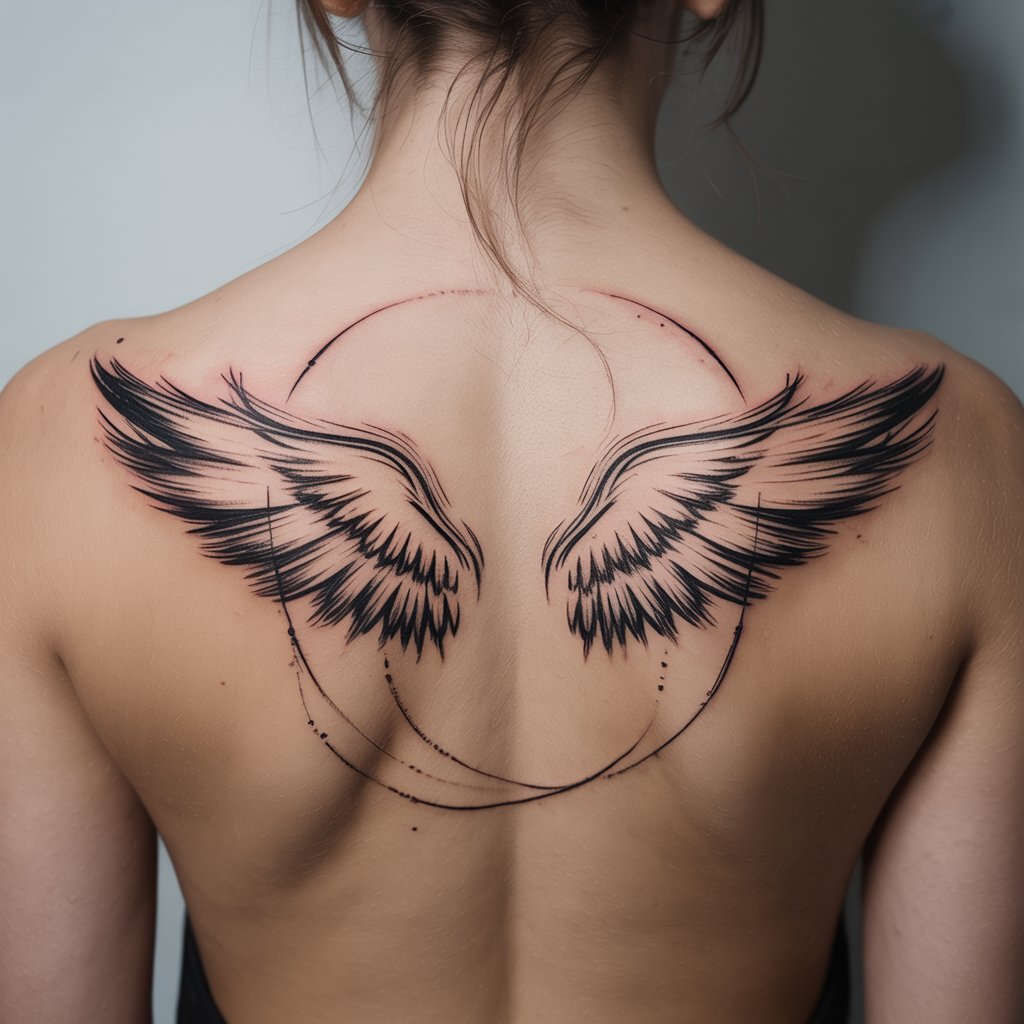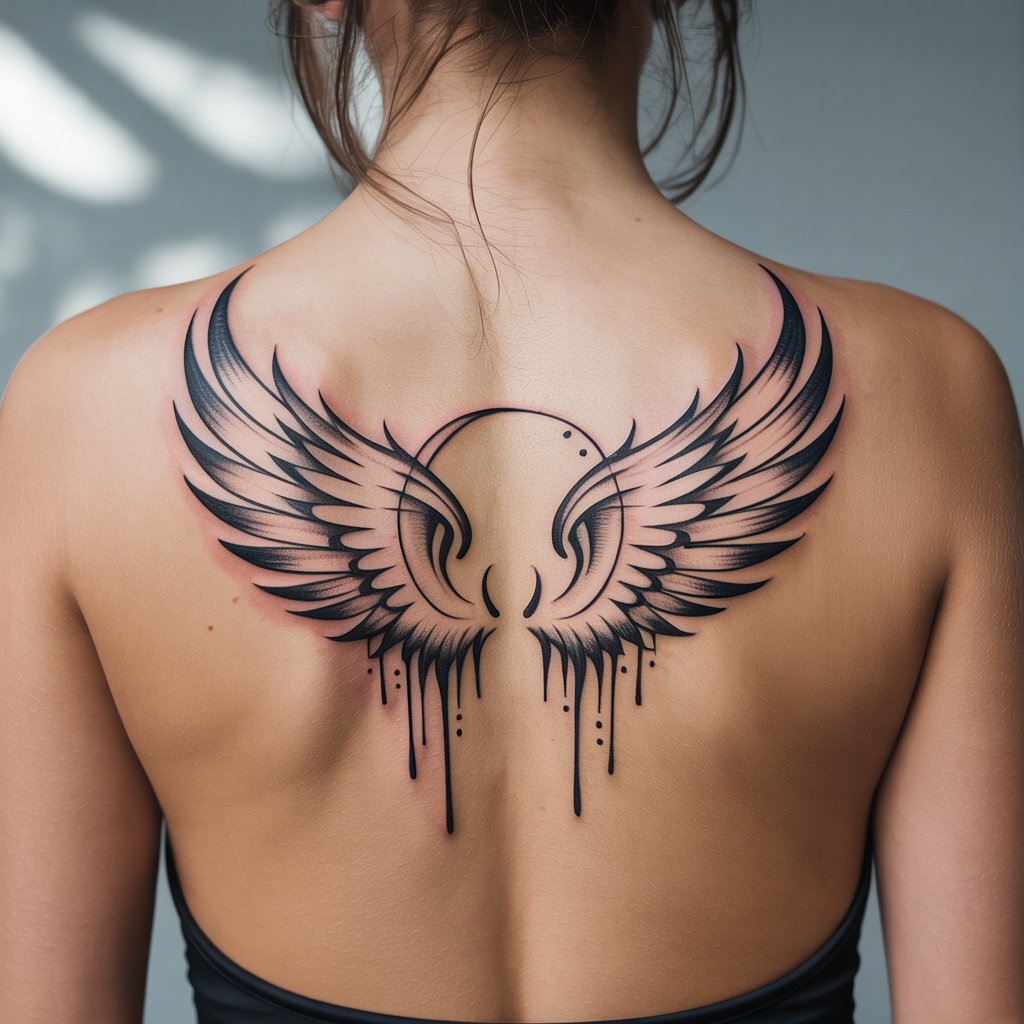In recent years, the world of tattoo artistry has witnessed a remarkable evolution, with symbolic designs like angel wings and botanical motifs emerging as some of the most sought-after styles. Far from the bold traditional designs of sailors and bikers, these contemporary tattoos offer a refined aesthetic that appeals to a diverse clientele seeking sophisticated self-expression.
Symbolic Flight: The Power of Wing Tattoos
Wing tattoos have soared in popularity, representing far more than just aesthetic appeal. Placed strategically across the back, these designs create a powerful visual statement while carrying profound personal meaning.
“Wing tattoos speak to something primal in us—the desire for freedom, transcendence, and protection,” explains tattoo artist Marco Reyes. “The back provides the perfect canvas, not just because of the available space, but because symbolically, wings belong there.”
The symbolism of wings varies across cultures but commonly represents:
- Freedom: Breaking free from constraints or limitations
- Protection: Guardian angels or spiritual guardians watching over the wearer
- Transformation: Personal evolution and growth
- Aspiration: Reaching higher and overcoming obstacles
Modern wing designs have evolved far beyond traditional angel imagery. Contemporary artists create wings with architectural precision, incorporating:
- Geometric elements and abstract shapes
- Dripping ink effects suggesting movement
- Sharp, angular feather details for dramatic impact
- Minimalist linework that suggests rather than depicts
“What makes contemporary wing designs so compelling is the balance between structure and fluidity,” notes tattoo artist Sofia Chen. “Each feather can be rendered with precision while the overall composition suggests movement and liberation.”
The Perfect Canvas: Back Placement
The upper and middle back have become prime real estate for wing tattoos, offering both ample space and natural symmetry. This placement creates a powerful visual impact when revealed, yet remains easily concealable when desired.
Strategic back placement allows for:
- Natural alignment with shoulder blades, enhancing the illusion that wings could actually emerge from the body
- Scale that makes a dramatic statement without overwhelming
- Design flexibility that can follow the natural contours of the spine and shoulder blades
- Room for detailed feather work and surrounding elements
“The way a well-designed wing tattoo follows the natural structure of the back creates an almost architectural harmony,” observes tattoo historian Dr. Emma Lin. “It’s as if the body was meant to display these symbols.”
For women especially, the upper back has become a favored location for wing tattoos. The gentle slope from neck to shoulders provides an ideal canvas for designs that can range from delicate and ethereal to bold and dramatic.
Fine Line Technique: The Artist’s Tool
The technical execution of these botanical masterpieces often relies on fine line work—a technique that requires steady hands and exceptional attention to detail. Unlike bold traditional tattoos that rely on thick outlines and heavy shading, botanical pieces utilize:
- Hair-thin lines for delicate stems and veins
- Dotwork shading for subtle dimension
- Minimal black ink with occasional selective color
- Strategic use of negative space
“The fine line approach allows for incredible detail in a relatively small space,” notes tattoo artist Leon Blackwood. “It’s technically demanding but offers unparalleled refinement.”

Beyond Aesthetics: The Symbolic Language of Flowers
While visually stunning, botanical tattoos often carry deeper meaning for their wearers. The language of flowers (floriography) has long been used to communicate messages and emotions:
- Peonies: Prosperity, good fortune, and masculine energy
- Roses: Love, passion, and beauty
- Cherry blossoms: The transience of life
- Lotus flowers: Spiritual awakening and purity
- Olive branches: Peace and victory
Many clients choose specific plants that resonate with their personal journey or heritage, transforming their body art into a visual narrative of their identity.
The Renaissance of Masculine Florals
Perhaps one of the most interesting developments in this botanical revolution is how it has transcended traditional gender boundaries. Once considered primarily feminine, floral designs have found new expression in masculine tattoo aesthetics.
The symmetrical chest piece featuring branches, leaves, and blooms has become particularly popular among men seeking tattoos that balance strength with refinement. These designs often incorporate:
- Strong compositional lines that follow the pectoral muscles
- Strategic placement that enhances body structure
- Botanical elements rendered with architectural precision
- Black ink execution that maintains a bold presence despite the delicate subject matter
The Perfect Placement
Location is crucial for botanical tattoos. While they can work beautifully anywhere on the body, certain placements have become iconic:
- Chest pieces that spread across the pectorals and collarbones
- Thigh pieces that wrap gracefully around the curve of the leg
- Forearm sleeves that create the illusion of branches growing up the arm
- Back pieces that use the spine as a central axis for symmetrical designs
The flat planes of the chest and the natural symmetry of the human form make the pectoral region an ideal canvas for mirrored botanical compositions.
The Future of Botanical Body Art
As we look to the future, botanical tattoos show no signs of fading from popularity. Instead, artists continue to push the boundaries of the style, incorporating:
- Geometric elements that contrast with organic forms
- Abstract interpretations of natural elements
- Micro-botanical designs that pack incredible detail into tiny spaces
- Innovative placement techniques that work with the body’s movement
For those considering their first tattoo or looking to add to an existing collection, botanical designs offer timeless appeal with endless possibilities for personalization.
Whether it’s a delicate sprig of lavender on the wrist or an elaborate chest piece of flowering branches, botanical tattoos continue to captivate with their perfect balance of natural beauty and artistic execution—a living garden etched permanently into skin.
Finding Your Botanical Style
If you’re inspired to embrace this elegant tattoo trend, consider these tips when planning your design:
- Research botanical illustrations to understand the structural details of your chosen plants
- Consider the natural flow of your body and how the design will complement it
- Think about symmetry versus asymmetry and which would better suit your aesthetic
- Find an artist who specializes in fine line botanical work
- Be patient—detailed botanical pieces take time to perfect
With thoughtful planning and skilled execution, a botanical tattoo can become more than just body art—it becomes a living testament to the enduring beauty of the natural world, carried with you wherever you go.


